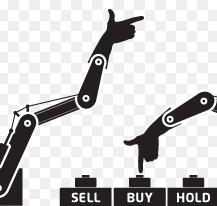Algorithmic Trading Strategies Dominate the Market
 Algorithmic trading strategies only a couple of years ago were rare and new to the world of trading. But as market participants catch on to this high tech trading strategy, it seems traders are trying to write trading programs that will trade for them, and in most cases more frequently. Institutions have made a huge shift to algorithmic trading strategies because it allows them to replace high paying traders with computer programs. These systems use sophisticated trading algorithms to conduct their trading business. Because computer programs collect and analyze large amounts of financial data much more quickly than humans, the impact has changed the overall look of the market place.
Algorithmic trading strategies only a couple of years ago were rare and new to the world of trading. But as market participants catch on to this high tech trading strategy, it seems traders are trying to write trading programs that will trade for them, and in most cases more frequently. Institutions have made a huge shift to algorithmic trading strategies because it allows them to replace high paying traders with computer programs. These systems use sophisticated trading algorithms to conduct their trading business. Because computer programs collect and analyze large amounts of financial data much more quickly than humans, the impact has changed the overall look of the market place.
Advantages to the use of algorithmic trading strategies allows for an individual or firm to trade multiple trading strategies at the same time. This is done faster and more efficiently than also. Allowing high-frequency and low frequency trading strategies lowers trading costs, increases market liquidity, and provides position and strategy diversification.
An algorithmic trading strategy that focuses on alpha is a trading solution used in quantitative trading to develop trading strategies that generate consistent alpha, also known as absolute returns. These algorithmic trading strategies can be simple or complex, but they all use price, volume and volatility in their analysis. With this data analysis, we can track and trade different scenarios in order to make profitable probability based trades.
The mathematical formulas used in algorithmic trading strategies are typically momentum trading and mean reversion, but many new strategy forms are evolving using wording in news, social media comments etc…
Algorithmic Trading Strategies Are the Ultimate Workhorse
Momentum algorithmic trading strategies us a mathematical model that looks at historical data in order to find a tradable pattern. It compares this to the current price to find stocks that are moving quickly in one direction, with the assumption that the short term momentum trend will continue.
Algorithm trading using mean reversion uses the average mean price for a particular stock, and enters a position when price is below the average on the assumption that the price will return to the average or beyond.
For an individual or entire firm for that matter it is almost impossible to keep track of the 8000+ stocks and ETFs current and historical price data. There is also the futures market. May firms implement futures trading systems to profit from the leverage of futures also. But for computers, this kind of analysis, tracking and trading perfect. Trading computers and servers can process all of the data, quickly, and, using algorithmic trading techniques, execute a large number of orders in the blink of an eye.
In general, algorithmic traders also known as automated trading earn more profit than traders who execute strategies manually. In most cases the slow/manual traders miss the short term price fluctuation when price moves a specific deviation from the statistical mean. This type of price action happens quickly and before manual traders realize it is happening, the advantage is already gone.
Algorithmic trading strategies utilize highly advanced algorithmic trading software. Quantitative developers with expertise in math, computer programming, and statistical analysis are critical to developing accurate and profitable mathematical models.
Algorithmic trading strategies are only as good as the data being analyzed. Garbage in, is garbage out. So it is essential to expend resources checking and cleaning up your data feeds.
As algo trading companies become more sophisticated, we will see more and more automated trading taking place in the market. Developing algorithmic trading strategies is essential for remaining profitable.
